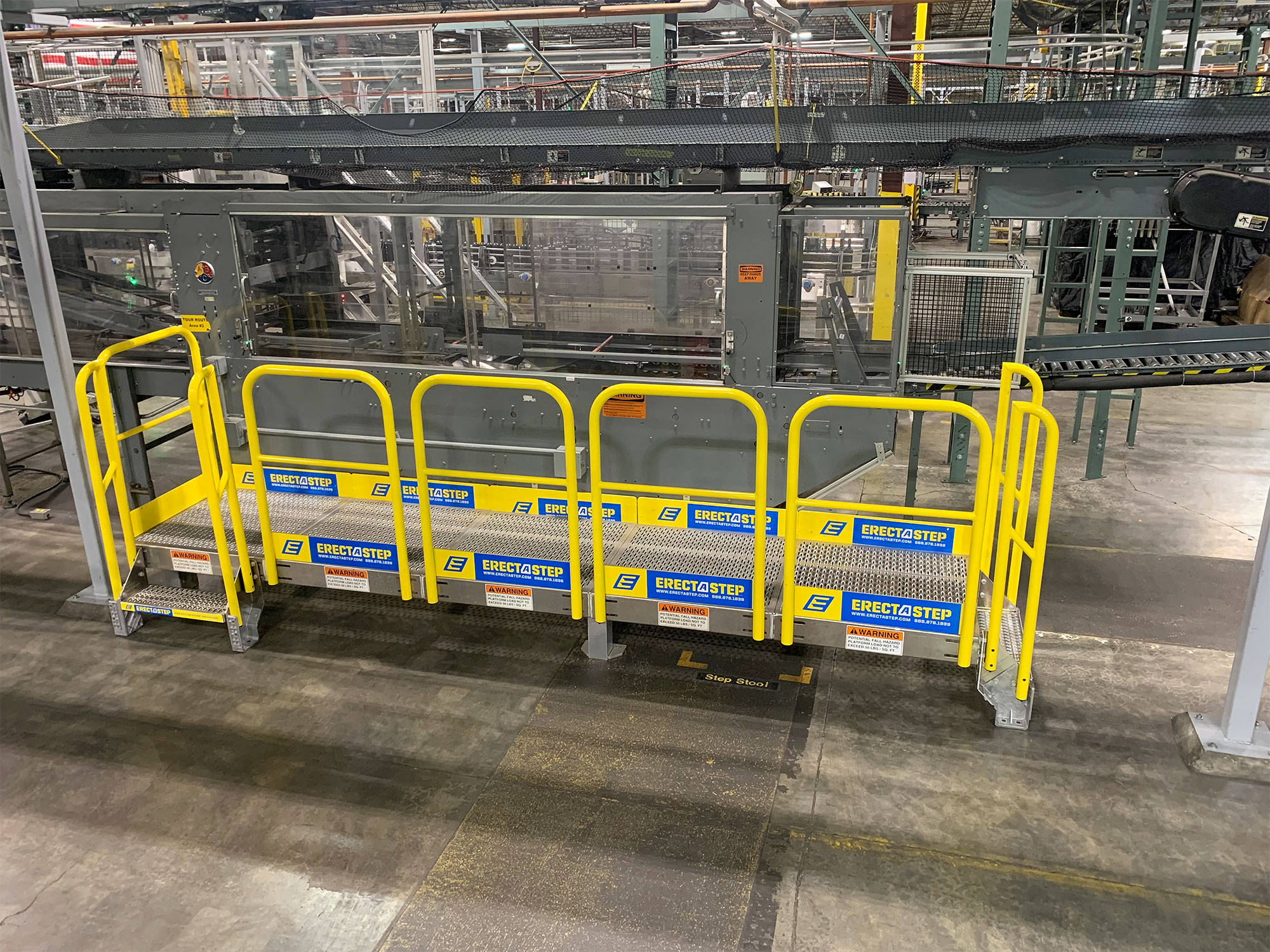Bottling Conveyor Platform at a Winery in Sonoma
Categories: Stairs & Work Platforms Pharmaceuticals ErectaStep

Custom ErectaStep platform installation
Conveyor bottling systems in the beverage industry are used for various tasks, from filling and capping to labeling and packing. These conveyor platforms offer a versatile, efficient way to move bottles through the multiple stages of production. In addition, facilities can easily customize conveyor systems to meet the specific needs of each bottling line.
A production line is a key element of any manufacturing process. It is a high-speed, automated system designed to move materials from one station to the next in a controlled and efficient manner. Factories use a production line to assemble all shapes and sizes of products, from cars to computers. A well-designed production line can help to improve quality control, as each station in the line is dedicated to a specific task. An efficient production line helps to reduce the risk of defects and ensures that products consistently meet the same high standards. In addition, a production line can help businesses to scale up their production levels quickly and efficiently. Scaling up is essential for companies experiencing rapid growth, as it allows them to meet customer demand without incurring high costs. A production line can be a valuable asset for growing businesses.
For example, conveyor systems can be equipped with sensors and other devices to verify that each bottle is correctly filled and capped before moving to the next stage. Devices help ensure that each bottle meets quality standards before shipping the products to customers. As a result, conveyor systems play a critical role in the beverage industry, helping to ensure that products are safe and of high quality.
Everything is about uptime, productivity, flexibility, and uniformity in the bottling and filling sector. When transporting fragile glass bottles or containers that give slippery fluids, you will require belts and conveyor components that have the necessary characteristics to manage the different operating circumstances that are present during the filling and packing process. The platforms to reach the bottling conveyors may be arranged in a straight line or a curved path and are often connected by walkways or other means of transportation. Conveyor platform systems are designed to move large quantities of goods or materials quickly and efficiently.
In conveyor belt systems, work platforms are installed to raise or lower the height for maximum productivity and minimum worker injury and fatigue risk. By raising or lowering the height of the platform, workers can avoid back strain and repetitive motion injuries. Additionally, workers can be positioned to best suit their needs, whether it be for comfort, safety, or efficiency. Ergonomically, the optimum working elevation is 2 feet below elbow height, and this is why an adjustable platform is recommended. By customizing the position of the work platform, businesses can ensure that their workers can work at their maximum potential. In the long run, this might result in higher levels of productivity and fewer claims for worker compensation. In short, installing a work platform in a conveyor belt system is a wise investment that can pay off in both the short and long run.
Perhaps the fact that wineries still use glass packing and conventional closures is relevant somehow. The fact that wines have such a wide range of flavors directly correlated to the harvesting of grapes may be another explanation. Because of this, vintners have to take extra precautions to ensure that their product maintains its quality once it is bottled. Checking the bottles at various points in the conveyor belt systems using platforms is key to the quality control process.
Traditional wooden barrel-fermented wine may also be difficult to move from the winery to the packaging factory. Although bottling plants of this type do exist, the wine business appears to have embraced the concept of mobile bottling lines, which travel to the sites of winemakers and execute the packaging at those locations — where rolling work platforms might just fit right in. As a result, packing equipment ownership and maintenance are not a financial burden for smaller producers.
Aside from work platforms, crossovers and industrial metal stairs can also be practical for wineries. Catwalk stair systems are also a great way to avoid huge wine barrel machines and conveyor installations around the facility, like our projects in Michael Angelo’s and Paul Mountain Vineyards.



